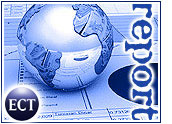
E-commerce firms, among others, have yet to grasp the full value of Internet advertising because many do not recognize the overall impact that online branding can have, according to a report released Monday by Jupiter Media Metrix (Nasdaq: JMXI).
Businesses that judge advertising campaigns solely on their ability to generate visits to Web sites, or on how many visitors are converted into buyers, do not measure all of the benefits of online ads, the New York-based market research firm said.
In fact, Jupiter said, the return on investment for online advertising may be as much as 35 percent higher than generally believed.
“The actual number of customers driven to Web sites by online advertising is greatly underestimated by traditional click-rate metrics,” said Jupiter analyst Rudy Grahn.
Measure by Measure
Instead of simply counting clicks, Grahn said, marketers must “begin quantifying online branding by measuring the user’s actual experience, instead of gauging only their attitudes.”
Currently, about 15 percent of all online ad campaigns are measured based on how effectively they help extend a brand, according to Jupiter. In contrast, 60 percent of all digital advertisers track direct responses, such as click-through rates, and 75 percent of all campaigns measure cost-per-customer conversion.
Traffic Factors
The study said that online advertising contributes 17 percent of the traffic to a Web site, while other factors such as seasonality and growing Internet use play significant roles as well.
Jupiter said that there are a few effective ways to measure how well an online branding campaign is working, and that new techniques are gaining traction.
One complicating factor is the Web’s fractured nature. Jupiter notedthat while Yahoo! (Nasdaq: YHOO) is seen as a way to reach a mass Internet audience, manyof its 20 million users at peak hours are spread across as many as 438different domains, such as sports or finance. The fact that a Yahoo! is divided into so many different channels makes it difficult to translate offline marketingpractices to the Web.
Debate Underway
The Jupiter study comes amid a roiling debate over the direction of Internet ads.
For example, camera and electronics site X10.com recently propelled itself into the upper echelon of Web traffic rankings by using pop-under and pop-up ads that even count surfers who only view the ad box as visitors to the site.
Analysts have questioned whether that type of traffic actually generates sales for a company or translates into people learning about the brand or experiencing a company’s Web site.
Additionally, a recent report from the Yankee Group predicted that growing broadband access will mean more use of streaming audio and video in advertising in coming year. ![]()















































Mr Regan’s article signposts that the future growth in online advertising is not going to be fuelled by the continued and rapid take-up of a new media, as we’ve seen in the last five years. Rather, it will be by advertisers’ recognition that online advertising delivers far more value than click-throughs at the time the ad is viewed, and by innovation from within the ad industry to deliver more value.
The main way we can deliver that value will be to take more notice of consumers’ interests. Although incredible progress has been made in a short time, with online advertising now meaning far more than a plain banner, many in the current ‘roiling debate’ are glossing over consumers’ interests. For example, do you, individually, really appreciate larger banners and pop-up windows? Applying short-term measures contrary to consumers’ interests in the long term is not a foundation for a sustainable industry.
With the internet and email taking larger portions of consumers’ media time, and with the barrage of emails that consumers are starting to receive, more inventive methods will need to be devised for reaching them how they want and when they want. When advertisers finally act on the marketing gap between consumer online time and advertising budgets, there need to be sustainable strategies for them to use.
Rich media, permission marketing and streaming technologies are the current flag-bearers, but it will be exciting to see where we are in another five years when Darwinism has had more time to take effect.
I always found the “click-through” measurement kind of silly. No one clicks through bus signs, billboards, magazines or TVs, yet their value in driving sales is understood. Yet the web delivers a more affluent audience and gets penalized because that audience does not immediately stop what it’s doing to go make a purchase at the advertised site.